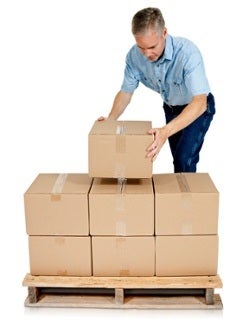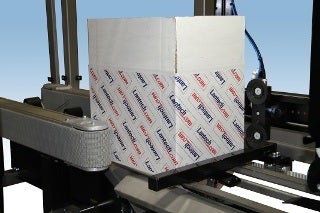
You’ve done your market research, created a product that your customers love, and developed and implement world class production with top-notch quality. There is only one thing left to do: pack the boxes and ship the product.
What are my options for case erecting, packing, and sealing? Should we just manually build and load the boxes, or should we completely automate?
The reality is that case packing and the integration of end of line packaging equipment falls on a continuum from fully manual to fully automated.
Manual case erecting and packing
Building and packing cases by hand has some obvious benefits:
- Requires little training, and operators can be up and running quickly
- People can easily adjust for case variations
- Easy to inspect products, load into packaging, and adjust as needed
There are negatives to manual packing and erecting operations though:
- Ergonomics and repetitive motion injury risk for operators
- May need multiple people to maintain required run rates
Fully automated case erecting, packing and sealing
Full automating case erecting, packing, and sealing sounds great in theory and is used extensively for high-volume, low variation end of line situations. For these applications automation reduces head count and increases packaging line output.
If the products and packaging are very consistent and run at high volumes then full automation may be the answer. Case and product variations product can cause end effectors and suction cups to jam and stop production.
Buying automation and integrating it is expensive and requires skilled operators to setup, run, and maintain the equipment. There is also a time overhead to design, build, integrate, install, test, and debug and a fully automated system. Once up and running full automation requires maintenance and things like spare parts, down time for preventive maintenance.
100% automation isn’t possible for every situation. Something as simple as putting products in a box can have its challenges, particularly when the products are irregular, complex, or expensive. In these circumstances, conventional pick and place automation often doesn’t work well or can be prohibitively expensive.

Somewhere in between
What if case erecting and sealing are automated and consistent and the packing is done by hand? A middle ground approach to automation allows the machines and people to do what they do best. The human/machine combination is the best of both worlds in that it incorporates what machines do best, rote work, and what humans do best, make judgments.
People are flexible and when guided by informed judgment deliver adjustments on the fly. An operator can inspect a product as they are picking it up, and then insert it properly into a case or remove it from the line for future re-work or inspection. People make adjustments on the fly and deal with a wide variety of situations without causing the line to stop.
A combination of people and automation works for low to moderate volume applications of up to ten cases per minute.
A few other things to consider when deciding on manual and automated case packing are:
- On average, a medium sized case can be erected and sealed by hand in 20 seconds per unit. How many case per minute do you need?
- How big are the products going into the case? If large, or small and delicate, case packing will slow down
- How many people do you have available to erect, pack, and seal cases? In the video one person is handling the equivalent of three to four operators performing all steps manually
There are potential issues with a mix of manual and automation; including, the need to maintain the automation, the need for some mechanical infrastructure (like clean, dry air), and carrying spare parts for the automation.
Manual vs automation: questions to ask
- Evaluate the trade-offs of costs of capital vs hourly labour
- Are you running regular daily production?
- Determine the speed trade-offs of manual vs automation
- How many cases per day? Need approximately 500 per day for hybrid solution
- Do you have few changeovers?
- What is the impact of case quality and reduced defects in packing of goods?
- How many people do you have packing and making boxes? If four to eight operators consider the hybrid approach
- Do the net gains outweigh costs?
Check out this video for an example of a hybrid approach using both man and machine for maximum end of line packaging efficiency.
There is no one right way to build cases, pack them, and seal them for shipment. There is a range of options, and a hybrid approach can yield the best return in many situations.
If you would like to talk to one of the experts at Lantech to discuss the right approach for your end of line packaging requirements, please contact us through the form on this page.

